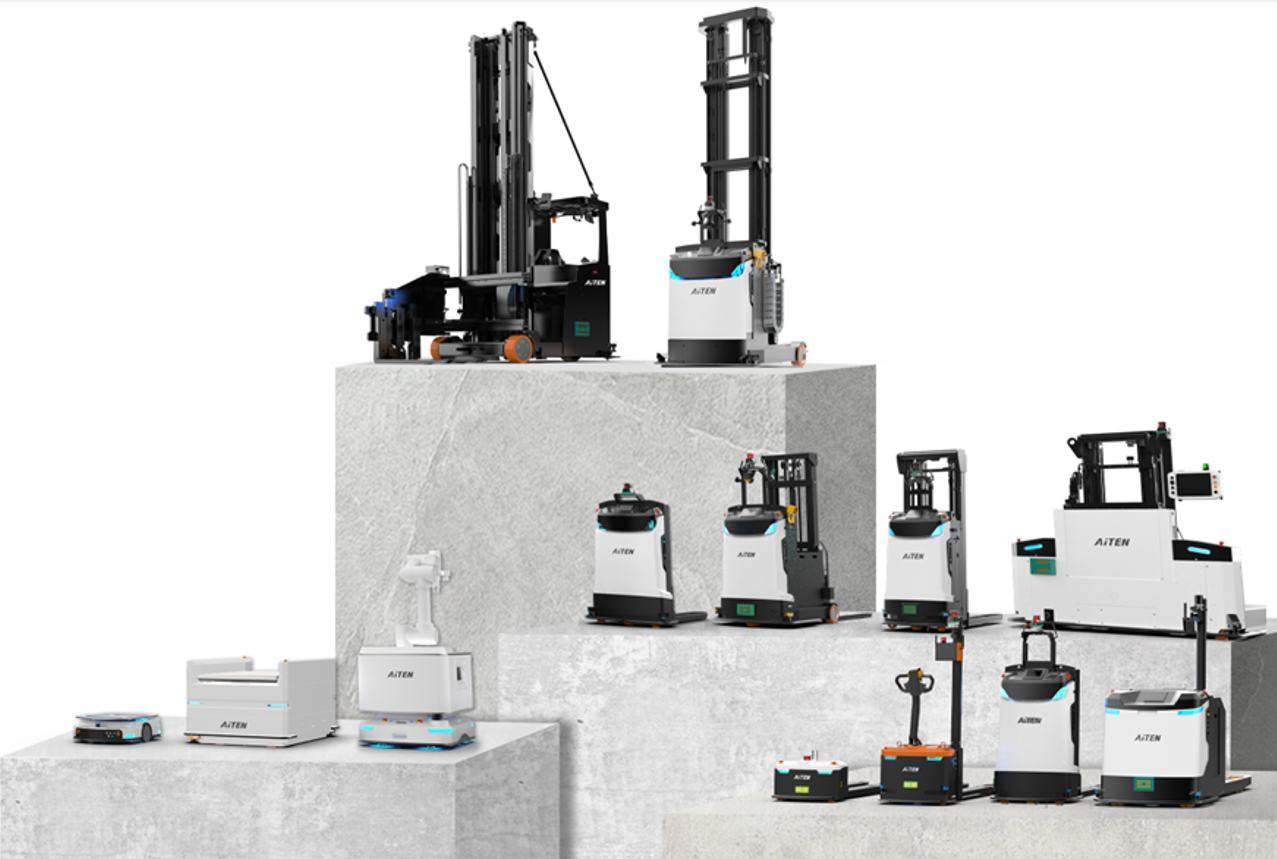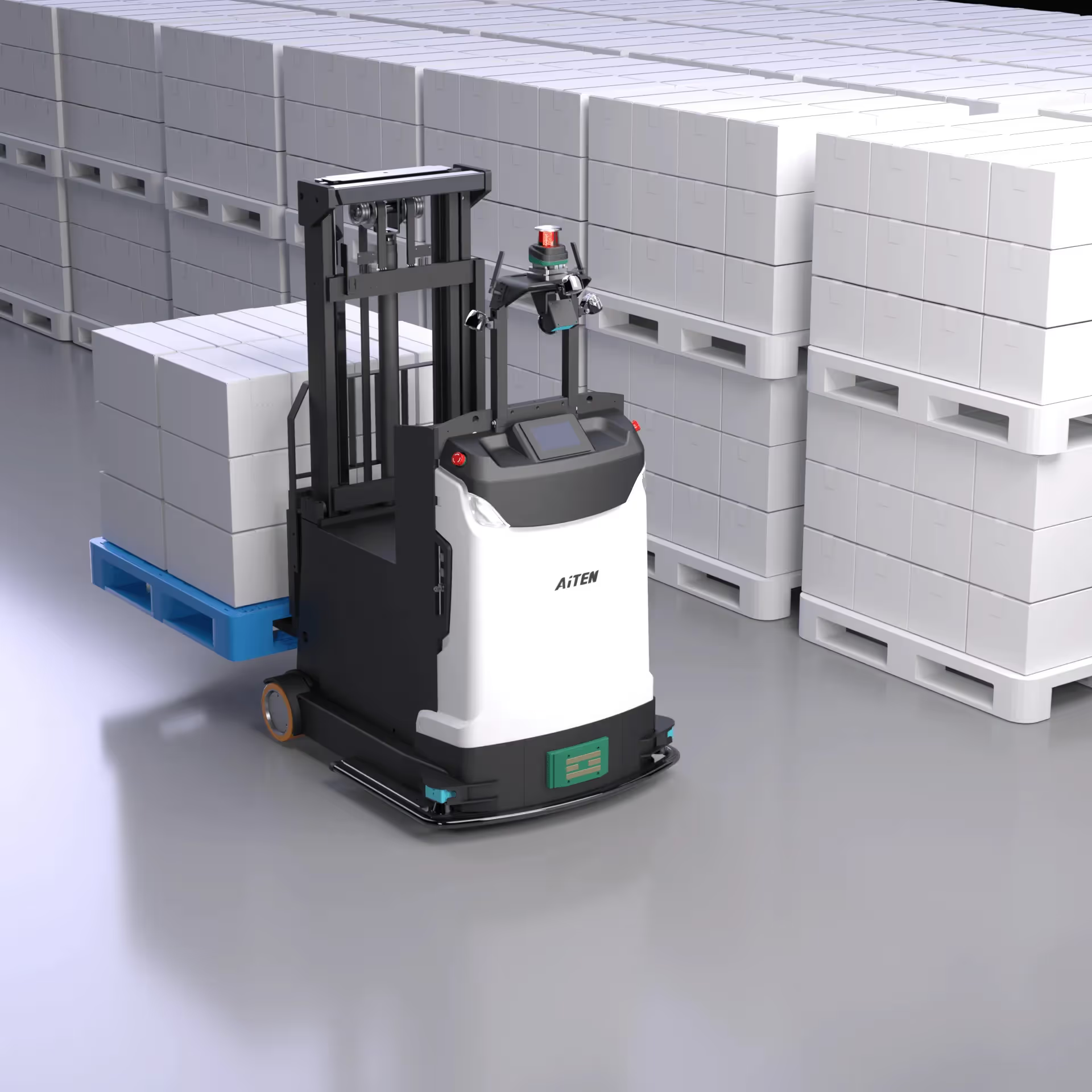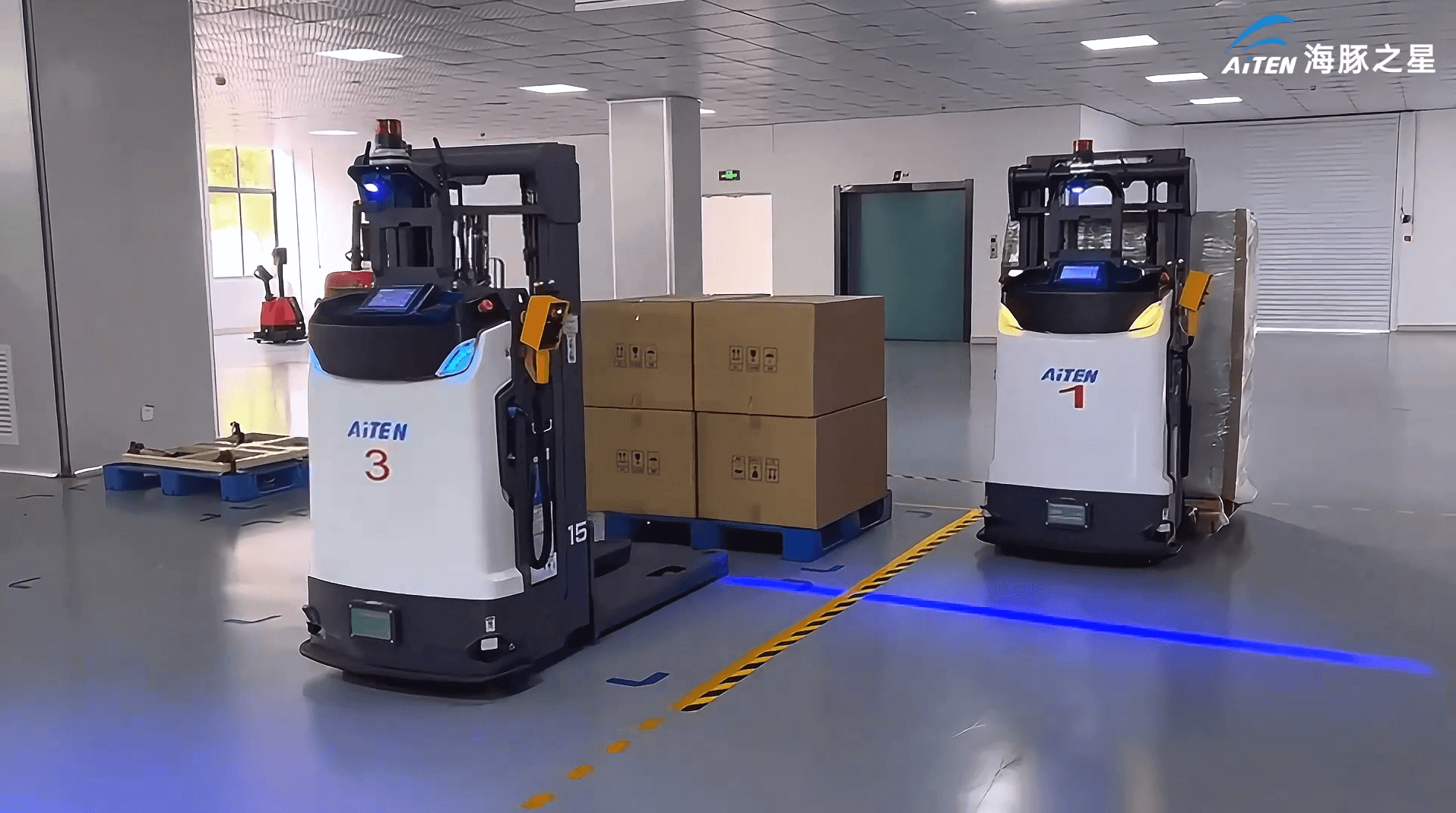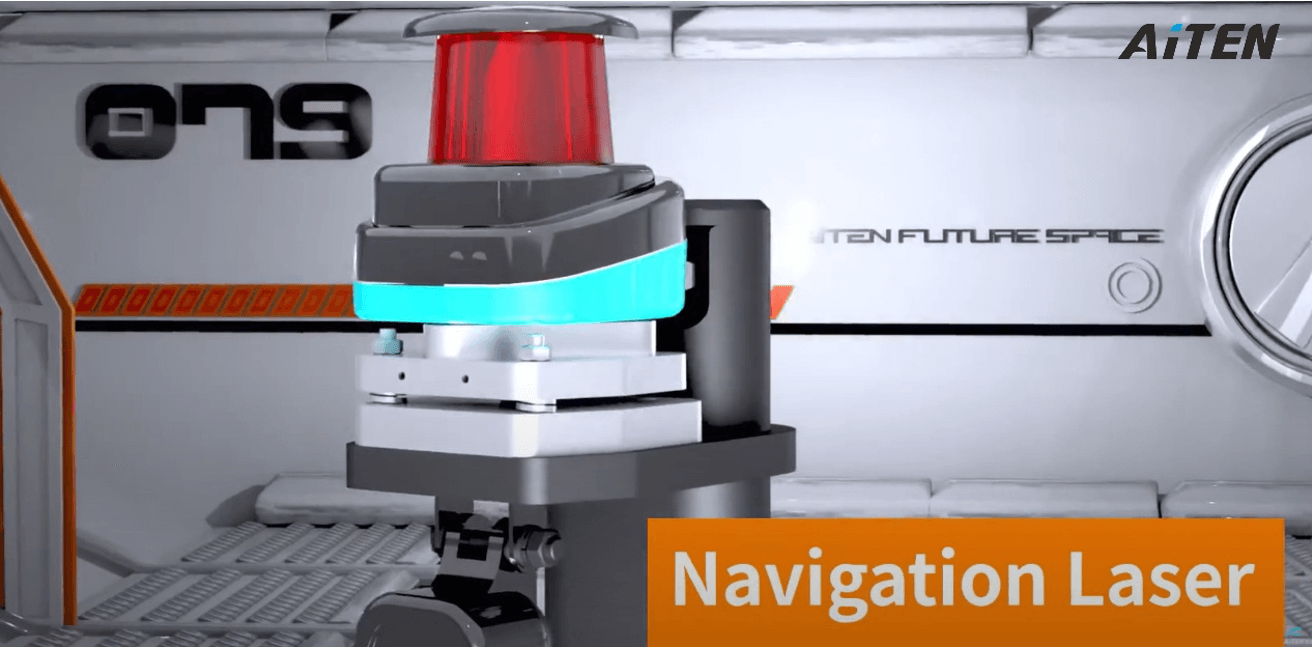What Are the Types of Autonomous Forklifts: A Comprehensive Analysis by Application Scenario

As a core piece of equipment in logistics automation, autonomous forklifts have evolved from simple material handling tools into intelligent systems capable of adapting to multiple application scenarios. Based on operational requirements, load capacity, and technical characteristics, the current mainstream autonomous forklifts can be categorised into four major types, covering applications across all fields such as warehousing and manufacturing.
Counterbalanced Unmanned Forklift
- Key Features: Utilises a counterbalanced design, offering robust load-bearing capacity without relying on rack support, enabling independent handling of heavy cargo.
- Typical Applications: AiTEN's AE Counterbalanced Series is compatible with various pallet types, accommodating diverse scenarios such as equipment bottom crossbars and load leg heights.Material handling across workshops and pallet production line handling in production processes are typical application scenarios, ensuring efficient logistics connectivity across all stages.

- Technical Highlights: Equipped with SLAM laser radar, it supports precise operation in complex environments, enabling high-precision map construction and positioning, and achieving millimetre-level precision at cargo handover points.
Stacking-type Autonomous Forklift
- Key features: AiTEN's AS stacking series material handling robots feature a compact design with a lifting mechanism, capable of reaching a lifting height of 6 metres and handling loads of 1 to 3 tonnes, making them ideal for narrow aisle operations.

- Typical Applications: Commonly found in high-bay shelving areas of e-commerce warehouses and 3PL centres, these forklifts are used for multi-layer stacking and retrieval of goods, enabling efficient handling of goods in high-bay shelving systems.
- Technical Highlights: Utilising multi-sensor fusion technology for dynamic obstacle avoidance, along with an optimised chassis structure and load design, these forklifts ensure stability during material handling operations, thereby enhancing operational safety.
Forward-Reaching Autonomous Forklift
- Key Features: The AiTEN AR forward-reaching forklift features extendable forks, combining stacking and material handling functions. It has a load capacity of 1-2 tonnes, a lifting height of up to 9 metres, and a compact body width of just 1.2 metres. The forward-reaching design enables seamless integration with multiple devices and racking systems, maximising warehouse space utilisation.
- Typical Applications: Ideal for pallet line distribution in production processes, ensuring seamless logistics connectivity across all stages, as well as for stacking and handling high-rack goods, enabling efficient retrieval and storage operations on elevated shelves.

- Technical Highlights: Rapid movement in narrow spaces, high-precision positioning, and automatic docking functionality ensure accuracy in every handling task, minimising errors and delays in goods transportation.
Towing Robots
- Key Features: Robust drive capabilities meet industrial-grade high-load handling requirements, with stable performance ensuring safe cargo transportation. For example, the AiTEN heavy-duty towing and handling robot AT50 has a rated load capacity of up to 5 tonnes and a maximum towing force of 4,000 N.
- Typical Scenarios: Suitable for flat-surface handling and cross-workshop logistics, enhancing warehouse operational efficiency. It can also be applied in manufacturing line-side logistics and e-commerce ‘goods-to-person’ picking processes, reducing manual handling time and costs while ensuring continuous operation of the production line.
- Technical Highlights: Specifically optimised battery life and power system, making it suitable for long-distance transportation needs in large-scale facilities.
總結
As technology evolves, autonomous forklifts are moving towards becoming ‘smarter and more flexible,’ such as by adding human-machine collaboration features—workers can directly command the forklift to avoid obstacles or dock using gesture recognition. When selecting a solution, in addition to focusing on hardware specifications, it is equally important to consider the manufacturer's software compatibility capabilities (such as the efficiency of integration with WMS systems) to ensure the equipment seamlessly integrates into existing workflows.
If you are seeking a more efficient and intelligent autonomous forklift solution, please get in touch with us. We will provide you with a customised, comprehensive material handling optimisation solution.
About AiTEN Robotics
As a company specialising in intelligent logistics solutions, AiTEN Robotics has consistently focused on the ‘smart factory’ scenario, deeply integrating technological innovation with industry needs. It has provided comprehensive services to over 200 manufacturing clients worldwide: Leveraging a full range of material handling robot product portfolios to cover diverse material handling scenarios, we have developed an industry-grade intelligent scheduling system to enable efficient collaboration among multiple devices. Through a comprehensive lifecycle service system spanning pre-sales planning, deployment and implementation to operations optimisation, we empower enterprises to achieve logistics intelligence transformation, continuously driving the digital upgrading and high-quality development of the manufacturing industry.
Contact us to explore automation solutions for your factory.
















.webp)







.jpg)
















_%E7%94%BB%E6%9D%BF%201.avif)

